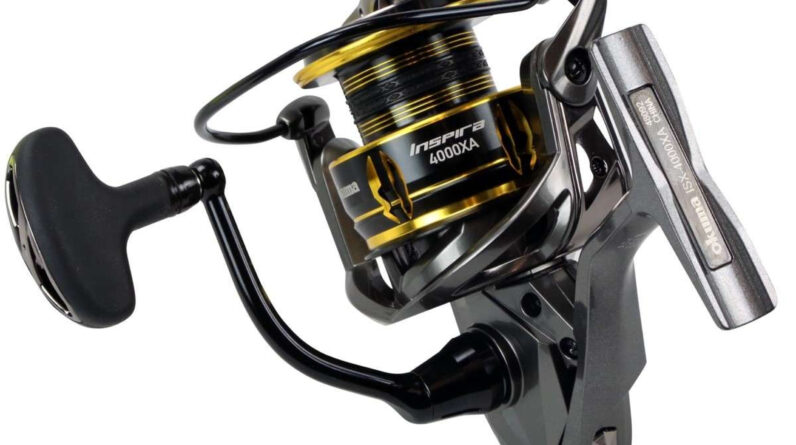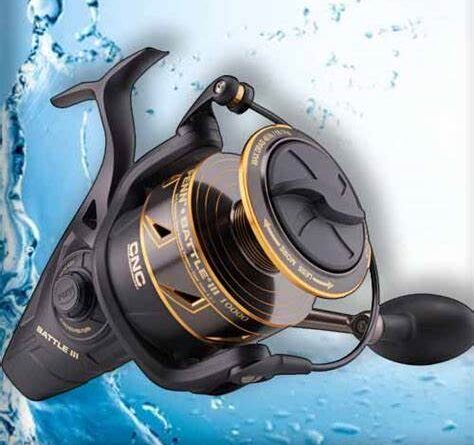Fishing is not just a hobby; it’s a passion that connects us with the tranquility of nature and the thrill of the catch. A critical component of a successful fishing expedition is selecting the right fishing reel. The type of reel you choose can significantly impact your fishing experience, affecting everything from casting accuracy to line retrieval. In this comprehensive guide, we’ll walk you through the essential factors to consider when selecting a fishing reel. Whether you’re an experienced angler or a novice, making an informed choice is crucial to your success. For an extensive selection of fishing reels and other fishing products, visit cheerfulfisherman.com.
Understanding the Basics: Types of Fishing Reels
Before delving into the selection process, it’s essential to understand the primary types of fishing reels available. Each type is designed for specific fishing techniques and environments. Here are the main types:
1. Spinning Reel
Key Features:
- Versatile and user-friendly.
- Suitable for beginners and experienced anglers.
- Ideal for light to medium fishing applications.
- Allows for longer casts and better line control.
Common Uses:
- Freshwater fishing for species like bass, trout, and panfish.
- Light saltwater fishing inshore.
2. Baitcasting Reel
Key Features:
- Provides exceptional casting accuracy and distance.
- Allows for precise lure placement.
- Suited for heavier lines and lures.
- Requires more skill and practice to use effectively.
Common Uses:
- Freshwater fishing for largemouth bass, pike, and muskellunge.
- Saltwater fishing for larger species like redfish and snook.
3. Spincast Reel
Key Features:
- Easy to use and beginner-friendly.
- The enclosed design protects the line and reel components.
- Limited casting distance and accuracy.
- Best for light to medium fishing.
Common Uses:
- Teaching beginners and kids to fish.
- Casual freshwater fishing for panfish and small bass.
4. Fly Fishing Reel
Key Features:
- Designed for fly fishing techniques.
- Provides precise control over fly line.
- Lightweight and often aesthetically pleasing.
- Requires matching with the fly rod and line weight.
Common Uses:
- Fly fishing for trout, salmon, and other freshwater species.
- Saltwater fly fishing for species like bonefish and tarpon.
5. Trolling Reel
Key Features:
- Built for trolling, where bait or lures are dragged behind a moving boat.
- Robust and durable construction.
- Often equipped with line counters.
- Suitable for heavy lines and deepwater fishing.
Common Uses:
- Offshore trolling for species like tuna, marlin, and sailfish.
- Freshwater trolling for lake trout and walleye.
Now that you have a basic understanding of the types of fishing reels, let’s explore the essential factors to consider when choosing the right one for your needs.
Factors to Consider When Choosing a Fishing Reel
1. Fishing Environment
Consider where you’ll be fishing—whether in freshwater or saltwater. Different environments expose your reel to varying levels of corrosion and require specific materials and coatings to withstand the conditions. Saltwater fishing, for instance, demands corrosion-resistant reels to withstand the harsh saltwater environment.
2. Target Species
The type of fish you intend to catch plays a significant role in reel selection. Lighter reels are suitable for smaller freshwater species, while heavier reels are necessary for larger, hard-fighting fish. Ensure your chosen reel has the capacity to handle the line weight and strength required for your target species.
3. Fishing Technique
The fishing technique you prefer influences your reel choice. Spinning reels are excellent for casting and retrieving lures, while baitcasting reels offer precision and control for techniques like flipping and pitching. Match your reel to your preferred fishing style for optimal performance.
4. Line Capacity
Your reel’s line capacity should match the fishing line you plan to use. Check the reel’s specifications for line capacity recommendations, ensuring it can hold enough line for your intended purpose. Undercapacity can lead to line breakage, while overcapacity may affect casting performance.
5. Gear Ratio
The gear ratio of a fishing reel indicates how many times the spool rotates with one turn of the handle. A higher gear ratio provides faster line retrieval, making it suitable for techniques requiring quick hook sets. Lower gear ratios offer more torque and are ideal for techniques like deepwater fishing.
6. Drag System
A smooth and reliable drag system is crucial for landing fish successfully. Look for a reel with an adjustable drag system that allows you to set the amount of resistance when a fish pulls on the line. A high-quality drag system helps prevent line breakage and reel damage.
7. Reel Material and Construction
Consider the material and construction of the reel. High-quality reels are often made of durable materials like aluminum or graphite. Metal reels are more robust but may be heavier, while graphite reels are lightweight and corrosion-resistant. Choose a material that suits your preferences and fishing environment.
8. Brand and Reputation
Reputable brands often provide better quality and customer support. Research and read reviews to determine which brands have a track record of producing reliable fishing reels. Visiting cheerfulfisherman.com can also help you find trusted fishing products from reputable manufacturers.
9. Price Range
Fishing reels come in a wide price range to suit various budgets. While premium reels offer advanced features and durability, there are also affordable options that provide good performance for beginners and occasional anglers. Set a budget that aligns with your needs and expectations.
Frequently Asked Questions (FAQs)
1. What is the best type of fishing reel for a beginner?
- Spinning reels are often recommended for beginners due to their ease of use and versatility. They are suitable for a wide range of fishing applications and are less prone to backlash, making them a great choice for those new to fishing.
2. Can I use a freshwater fishing reel for saltwater fishing?
- It’s not advisable to use a freshwater reel in saltwater environments. The corrosive nature of saltwater can damage the reel’s components and reduce its lifespan. Saltwater reels are specifically designed with corrosion-resistant materials to withstand these conditions.
3. How often should I maintain my fishing reel?
- Regular maintenance is essential to ensure the longevity and performance of your fishing reel. After each fishing trip, rinse your reel with fresh water to remove salt and debris. Periodically, lubricate the reel’s moving parts, clean the line guide, and inspect for any signs of wear or damage.
4. What is the significance of the gear ratio in a fishing reel?
- The gear ratio indicates how quickly the line is retrieved with each turn of the reel handle. Higher gear ratios provide faster retrieval speeds, which can be advantageous for techniques requiring rapid hook sets or lure presentation. Lower gear ratios offer more torque for handling larger fish or deepwater fishing.
Conclusion
Choosing the right fishing reel is a crucial decision that can significantly impact your fishing experience. Consider factors such as the fishing environment, target species, fishing technique, line capacity, gear ratio, drag system, and reel construction when making your selection. Additionally, research reputable brands and set a budget that aligns with your needs. For a wide selection of fishing reels and other fishing products, be sure to visit cheerfulfisherman.com to find the perfect reel for your angling adventures.







2 Comments
Comments are closed.